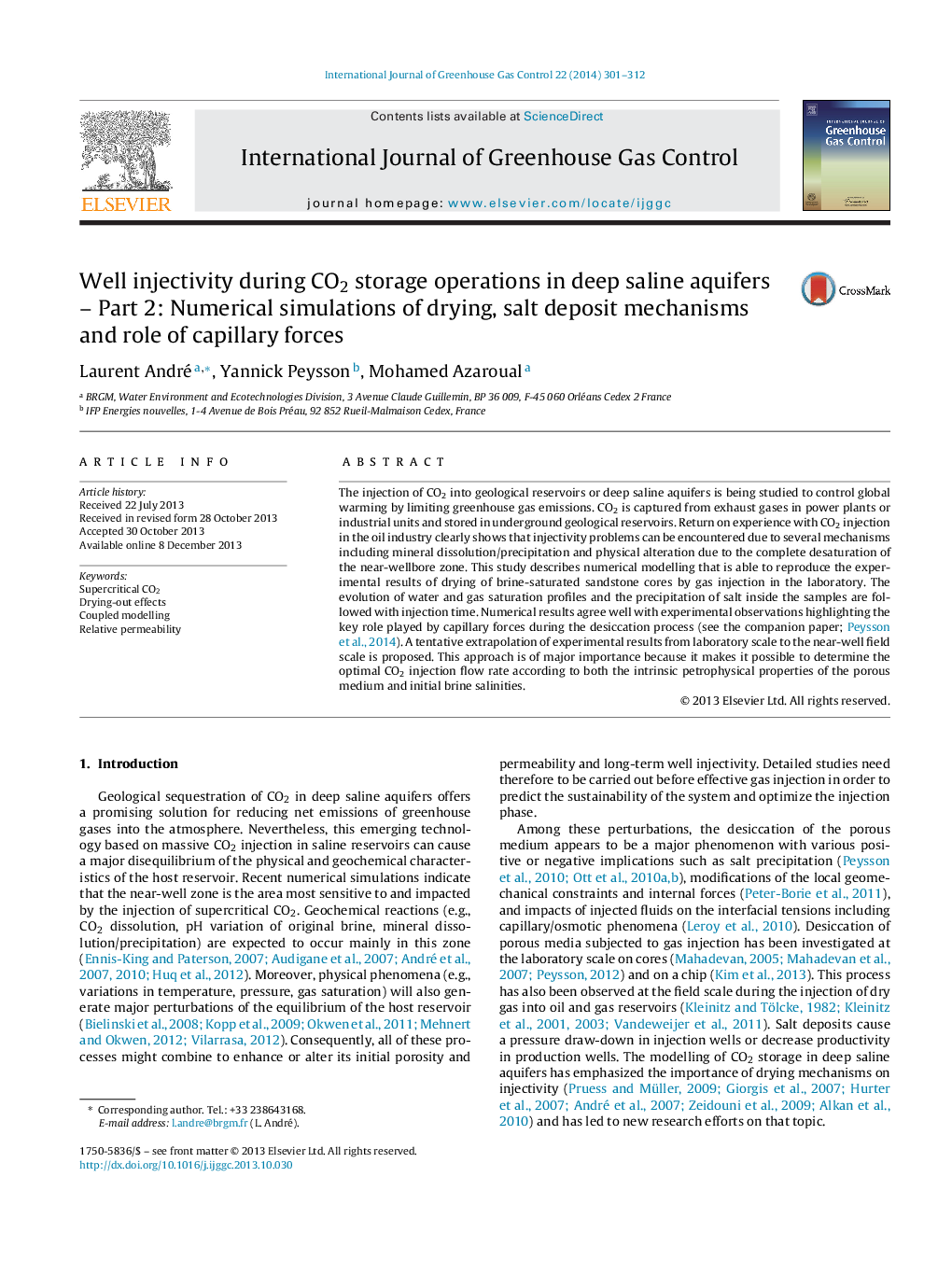| کد مقاله | کد نشریه | سال انتشار | مقاله انگلیسی | نسخه تمام متن |
|---|---|---|---|---|
| 8091586 | 1521999 | 2014 | 12 صفحه PDF | دانلود رایگان |
عنوان انگلیسی مقاله ISI
Well injectivity during CO2 storage operations in deep saline aquifers - Part 2: Numerical simulations of drying, salt deposit mechanisms and role of capillary forces
دانلود مقاله + سفارش ترجمه
دانلود مقاله ISI انگلیسی
رایگان برای ایرانیان
کلمات کلیدی
موضوعات مرتبط
مهندسی و علوم پایه
علوم زمین و سیارات
فرآیندهای سطح زمین
پیش نمایش صفحه اول مقاله

چکیده انگلیسی
The injection of CO2 into geological reservoirs or deep saline aquifers is being studied to control global warming by limiting greenhouse gas emissions. CO2 is captured from exhaust gases in power plants or industrial units and stored in underground geological reservoirs. Return on experience with CO2 injection in the oil industry clearly shows that injectivity problems can be encountered due to several mechanisms including mineral dissolution/precipitation and physical alteration due to the complete desaturation of the near-wellbore zone. This study describes numerical modelling that is able to reproduce the experimental results of drying of brine-saturated sandstone cores by gas injection in the laboratory. The evolution of water and gas saturation profiles and the precipitation of salt inside the samples are followed with injection time. Numerical results agree well with experimental observations highlighting the key role played by capillary forces during the desiccation process (see the companion paper; Peysson et al., 2014). A tentative extrapolation of experimental results from laboratory scale to the near-well field scale is proposed. This approach is of major importance because it makes it possible to determine the optimal CO2 injection flow rate according to both the intrinsic petrophysical properties of the porous medium and initial brine salinities.
ناشر
Database: Elsevier - ScienceDirect (ساینس دایرکت)
Journal: International Journal of Greenhouse Gas Control - Volume 22, March 2014, Pages 301-312
Journal: International Journal of Greenhouse Gas Control - Volume 22, March 2014, Pages 301-312
نویسندگان
Laurent André, Yannick Peysson, Mohamed Azaroual,